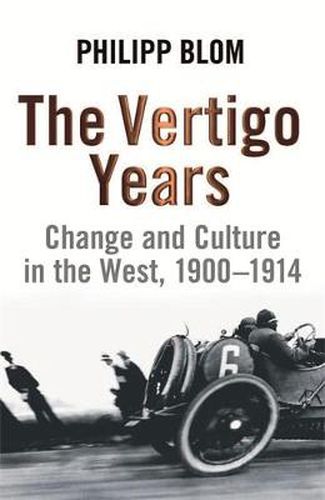Readings Newsletter
Become a Readings Member to make your shopping experience even easier.
Sign in or sign up for free!
You’re not far away from qualifying for FREE standard shipping within Australia
You’ve qualified for FREE standard shipping within Australia
The cart is loading…






Europe, early in the twentieth century: a world adrift, a pulsating era of creativity and contradictions. But did this era vanish in the trenches of the Somme, of Ypres and of Passchendaele? Look closer and the more this world seems like ours: feminism, democratisation, commercial branding, genetics, consumerism and racism, radioactivity and psychoanalysis are all terms first used during this period.
This was a time in which old certainties broke down and many people lost their bearings. At the heart of this vibrant Europe, was a contradiction that would cause its collapse: the new, modern world of mass production, urban life, technological warfare and a rapidly growing working class that was still ruled by men who preferred the image of dashing cavalry officers to the prosaic slaughter of the machine gun, and national mythology to political cohesion and democracy.
The eventual scope of the catastrophe often obscures the fact that the great cultural divide in Europe’s history lies before 1914. This book brings to life the immediacy of the lives and issues of this fascinating and flawed period.
$9.00 standard shipping within Australia
FREE standard shipping within Australia for orders over $100.00
Express & International shipping calculated at checkout
Europe, early in the twentieth century: a world adrift, a pulsating era of creativity and contradictions. But did this era vanish in the trenches of the Somme, of Ypres and of Passchendaele? Look closer and the more this world seems like ours: feminism, democratisation, commercial branding, genetics, consumerism and racism, radioactivity and psychoanalysis are all terms first used during this period.
This was a time in which old certainties broke down and many people lost their bearings. At the heart of this vibrant Europe, was a contradiction that would cause its collapse: the new, modern world of mass production, urban life, technological warfare and a rapidly growing working class that was still ruled by men who preferred the image of dashing cavalry officers to the prosaic slaughter of the machine gun, and national mythology to political cohesion and democracy.
The eventual scope of the catastrophe often obscures the fact that the great cultural divide in Europe’s history lies before 1914. This book brings to life the immediacy of the lives and issues of this fascinating and flawed period.